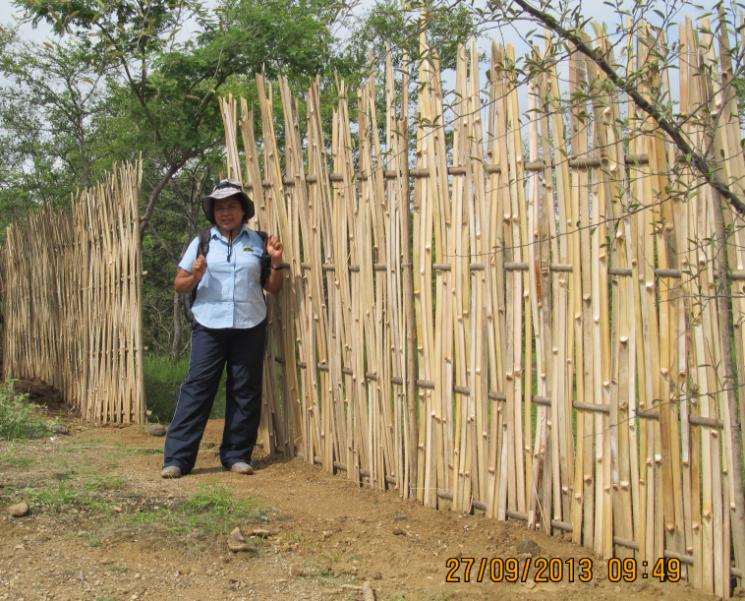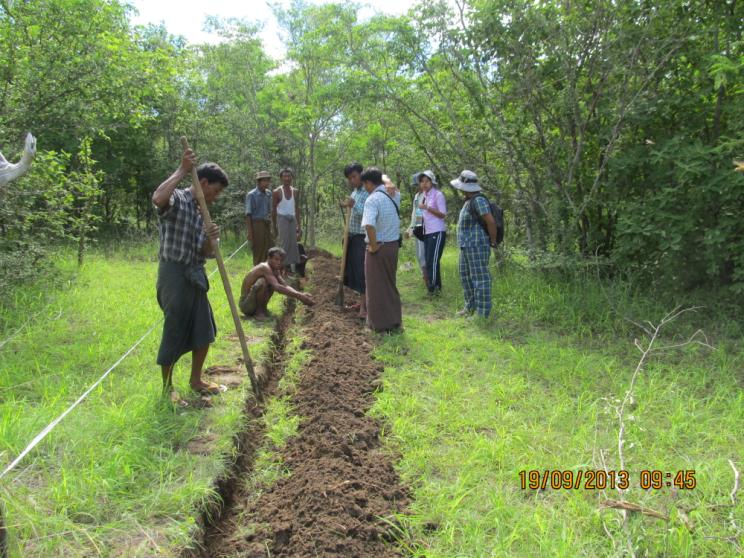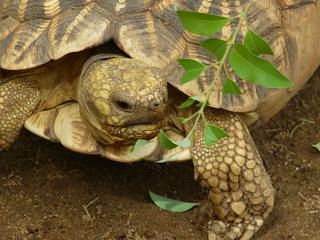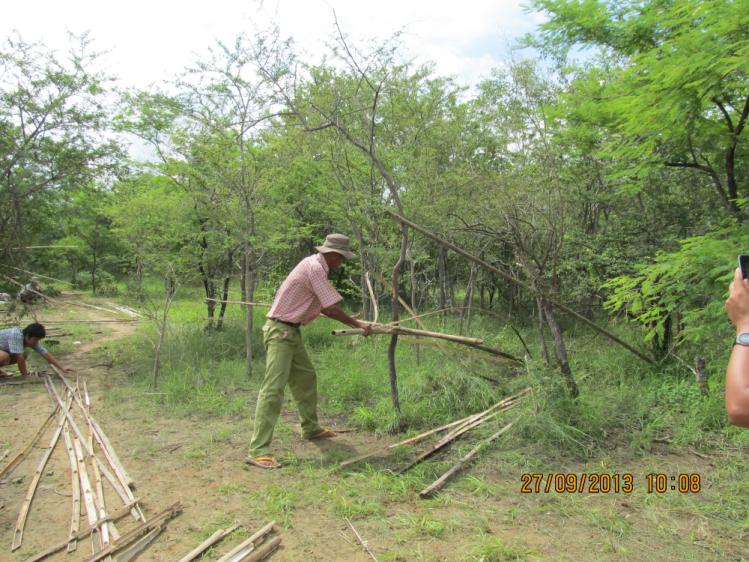Star Tortoise Pre-Release Pens Built in Myanmar
by Heather Lowe 
 The Turtle Survival Alliance (TSA) and the Wildlife Conservation Society (WCS) work together to conserve three of Myanmar’s critically endangered endemic turtles and tortoises. Since 2009, the TSA has been aggressively pursuing a conservation campaign to conduct field research, coordinate rescue operations for turtles confiscated from the wildlife trade, hold training workshops and oversee multiple construction projects. During that time, we have managed to assemble assurance colonies (groups of endangered animals that are carefully managed in captivity to prevent their extinction) for several species. The Burmese Star Tortoise (Geochelone platynota) is considered to be “functionally extinct” in nature (no wild breeding populations remain), but it has done exceptionally well in captivity. At this point, several thousand animals exist in our assurance colonies in Myanmar, and those colonies continue to grow.
The Turtle Survival Alliance (TSA) and the Wildlife Conservation Society (WCS) work together to conserve three of Myanmar’s critically endangered endemic turtles and tortoises. Since 2009, the TSA has been aggressively pursuing a conservation campaign to conduct field research, coordinate rescue operations for turtles confiscated from the wildlife trade, hold training workshops and oversee multiple construction projects. During that time, we have managed to assemble assurance colonies (groups of endangered animals that are carefully managed in captivity to prevent their extinction) for several species. The Burmese Star Tortoise (Geochelone platynota) is considered to be “functionally extinct” in nature (no wild breeding populations remain), but it has done exceptionally well in captivity. At this point, several thousand animals exist in our assurance colonies in Myanmar, and those colonies continue to grow.
This is great news for the species, as it means that reintroducing animals to the wild is now a possibility! Given the challenges that this species faces in the wild, it was essential that we develop a long-term, multi-faceted plan to give the animals that are returned to the wild the highest possible chance of survival.
 From the community perspective, that has involved doing intensive local outreach for many months, as part of the overall release strategy. Local villagers regularly visit the sanctuary and represent the first line of defense against poachers. For this reason, we see them as critical partners in this project and have been working to educate them about the tortoises, their conservation status, and the reintroduction project. Many locals in the area have strong religious that confer protection to the tortoises. Tortoises selected for release will be symbolically “donated” to monks dwelling in the monastery atop the mountain within the sanctuary and blessed before being released. Buddhist clergy have tremendous influence locally and their involvement can insure the long-term success of the reintroduction project.
From the community perspective, that has involved doing intensive local outreach for many months, as part of the overall release strategy. Local villagers regularly visit the sanctuary and represent the first line of defense against poachers. For this reason, we see them as critical partners in this project and have been working to educate them about the tortoises, their conservation status, and the reintroduction project. Many locals in the area have strong religious that confer protection to the tortoises. Tortoises selected for release will be symbolically “donated” to monks dwelling in the monastery atop the mountain within the sanctuary and blessed before being released. Buddhist clergy have tremendous influence locally and their involvement can insure the long-term success of the reintroduction project.
 The team has also developed school-based education programs to foster a greater awareness of star tortoise conservation among village youths. Lastly, they have assembled a team of Community Conservation Volunteers (CCV) who will assist in various tasks, and perhaps eventually be hired as field technicians. Most importantly, volunteers will provide a direct liaison with each community, and be encouraged to notify TSA or Forest Department staff of illegal poaching.
The team has also developed school-based education programs to foster a greater awareness of star tortoise conservation among village youths. Lastly, they have assembled a team of Community Conservation Volunteers (CCV) who will assist in various tasks, and perhaps eventually be hired as field technicians. Most importantly, volunteers will provide a direct liaison with each community, and be encouraged to notify TSA or Forest Department staff of illegal poaching.
From the tortoises’ perspective, that means doing everything that we can to ensure that they remain healthy after being released and remain in the sanctuary, where they will be protected. All of the tortoises will receive health screenings prior to their release and will be fitted with transmitters that will allow our biologists to track their movements in the future. To encourage site fidelity (staying in the area in which they are released), we have recently constructed three large (one hectare each), round pens where the tortoises will be held for several months to acclimate them to the area.
 Studies have shown that holding tortoises in pens such as these encourage them to stay in the area after they are released. To build these pens, the TSA/WCS team purchased more than 4,000 pieces of bamboo which were hand-split (shown, right) and assembled to create fences. To ensure the safety of the tortoises while they are being held, a guard tower was also constructed in the center of the three pens where they can be watched over. When the time comes for release, the team will do a ‘soft release’, meaning that they will simply open specially designed gates on the pens and allow the tortoises to wander out into the sanctuary on their own, returning this species to its native range in Myanmar – a true conservation victory!
Studies have shown that holding tortoises in pens such as these encourage them to stay in the area after they are released. To build these pens, the TSA/WCS team purchased more than 4,000 pieces of bamboo which were hand-split (shown, right) and assembled to create fences. To ensure the safety of the tortoises while they are being held, a guard tower was also constructed in the center of the three pens where they can be watched over. When the time comes for release, the team will do a ‘soft release’, meaning that they will simply open specially designed gates on the pens and allow the tortoises to wander out into the sanctuary on their own, returning this species to its native range in Myanmar – a true conservation victory!
